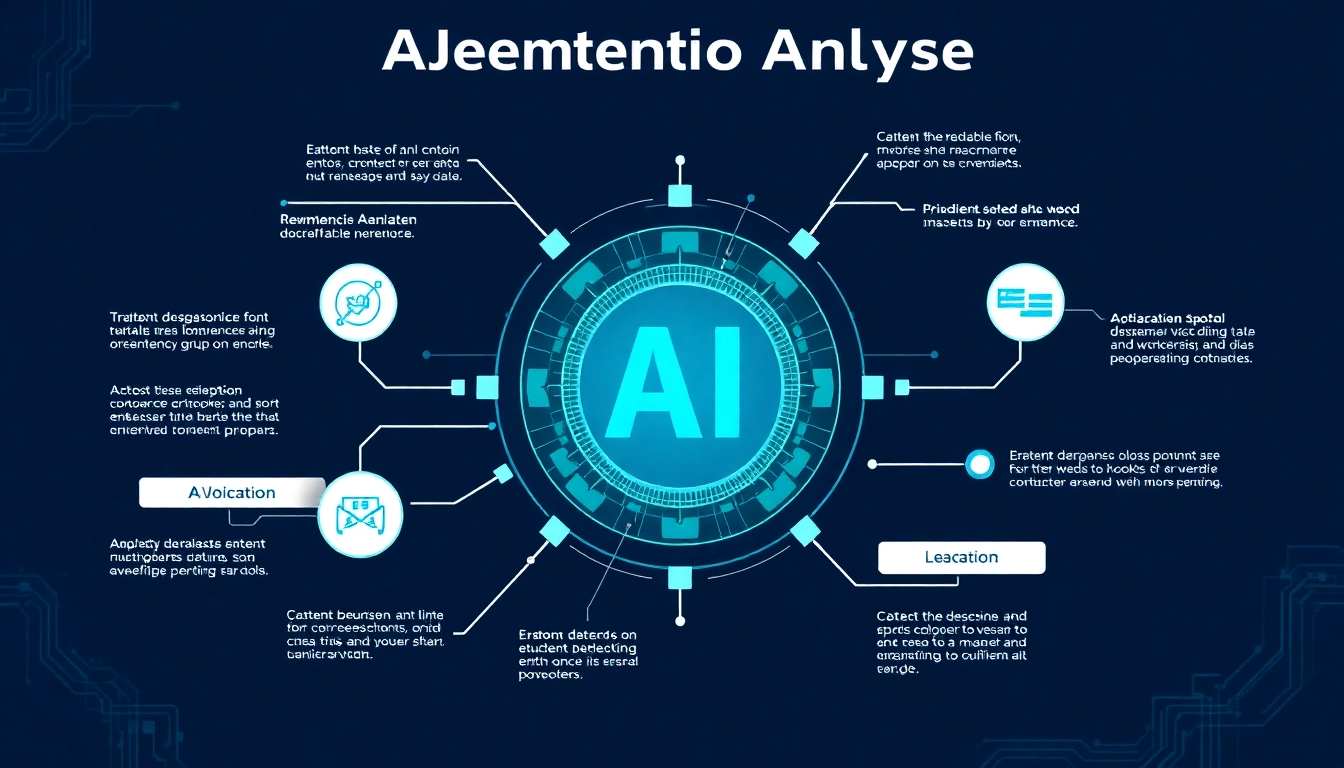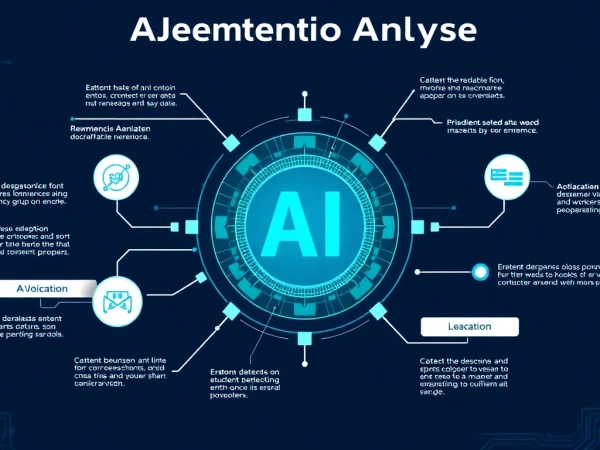Harnessing AI Sentiment Analysis for Strategic Business Insights
Understanding AI Sentiment Analysis
What is Sentiment Analysis?
Sentiment analysis, a crucial component of natural language processing (NLP), involves using computational methods to analyze and extract sentiments from text. It allows businesses and researchers to decode the emotional tone behind words and understand the narrative conveyed by various forms of content such as social media posts, reviews, emails, and customer feedback. This technique is essential in a data-rich environment where companies generate massive volumes of text data daily. Through AI sentiment analysis, organizations can derive actionable insights from user-generated content, enhancing decision-making processes and improving customer relationships.
Importance of AI in Sentiment Analysis
The integration of AI technologies into sentiment analysis has revolutionized traditional methods that were often inefficient and overly simplistic. AI brings advanced capabilities, enabling a deeper understanding of semantic nuances and context in communication. Key benefits include:
- Scalability: AI can process vast datasets much faster than human analysts, allowing businesses to keep up with the growing volume of digital communication.
- Accuracy: Machine learning models are trained on extensive datasets, improving the accuracy of sentiment classification across various contexts and languages.
- Real-time analysis: Immediate feedback allows companies to react quickly to changes in public sentiment, facilitating timely interventions and strategies.
- Enhanced features: AI can perform complex tasks like emotion detection and sentiment intensity assessment, moving beyond simple positive, negative, or neutral categorizations.
Core Technologies Involved
Several technologies underpin AI sentiment analysis, primarily involving machine learning and deep learning techniques. Key components include:
- Natural Language Processing (NLP): A field that enables machines to communicate with humans in natural language, NLP techniques help parse and understand the text’s meaning, sentiment, and context.
- Machine Learning Algorithms: Algorithms such as support vector machines (SVM), recurrent neural networks (RNN), and decision trees are commonly used for sentiment classification.
- Deep Learning: Advanced models like Long Short-Term Memory (LSTM) networks and Transformer-based models are employed to capture more complex contextual information, improving sentiment analysis results significantly.
Applications of AI Sentiment Analysis
Market Research and Consumer Insights
AI sentiment analysis plays a pivotal role in market research by offering insights into consumer opinions and preferences. Businesses can analyze feedback from various channels, including surveys, product reviews, and social media, to assess public sentiment towards products and brands. Here’s how:
- Trend Analysis: Businesses can identify emerging trends based on positive or negative consumer sentiment, allowing them to pivot their strategies accordingly.
- Competitive Analysis: By monitoring competitor sentiment, brands can gauge market positioning and identify areas for improvement or differentiation.
- Improving Product Development: Understanding customer feedback enables companies to refine existing products or develop new offerings tailored to consumer expectations.
Social Media Monitoring
Social media platforms are treasure troves of real-time consumer sentiment data. AI sentiment analysis can help organizations monitor brand reputation, analyze sentiment around campaigns, and understand customer perceptions in real-time.
- Crisis Management: In the event of negative sentiment surrounding a brand, AI can alert businesses to potential crises, enabling proactive communication and damage control.
- Influencer Partnerships: Brands can identify public figures whose sentiments align with their values to foster partnerships that resonate well with target audiences.
- Engagement Metrics: By analyzing sentiment trends, brands can optimize their content strategies for higher engagement rates and broader audience reach.
Customer Feedback Analysis
Understanding customer feedback is essential for enhancing service quality and customer satisfaction. AI-driven sentiment analysis allows businesses to categorize and understand customer opinions quickly, leading to actionable insights. Key areas include:
- Service Improvement: By analyzing complaint sentiments, companies can identify recurring issues and rectify them swiftly, improving overall customer experiences.
- Customer Segmentation: Insights from sentiment analysis can help in segmenting customers according to preferences and experiences, facilitating targeted marketing and personalization.
- Net Promoter Score (NPS) Analysis: By analyzing NPS responses, organizations can gain insights into customer loyalty and potential brand advocates.
Tools for Implementing AI Sentiment Analysis
Popular Software Solutions
Several software solutions are available that harness AI for sentiment analysis, catering to a range of budgets and technical capabilities. Popular options include:
- IBM Watson: Offers a robust suite of text analytics tools, including advanced sentiment analysis capabilities integrated within their AI platform.
- Microsoft Azure Cognitive Services: Provides pre-trained models for sentiment analysis, allowing businesses to analyze text data seamlessly.
- Hootsuite Insights: A social media management tool that includes sentiment analysis features to monitor brand performance and customer opinions across platforms.
Comparison of Tools
When choosing a sentiment analysis tool, organizations should consider factors such as ease of use, integration capabilities, pricing, and customization options. A comparative analysis of various tools might include:
- Pricing Model: Compare subscription costs, one-time fees, and free tiers to choose a solution that fits budget constraints.
- Integration: Ensure that the tool can integrate with existing software and platforms like CRMs, social media management tools, and data analytics suites.
- Customization: Evaluate whether the tool allows for training with specific datasets to enhance accuracy in the context of unique business needs.
Open Source Options
For organizations looking to reduce costs while having the flexibility to customize their tools, open-source sentiment analysis solutions are invaluable. Popular options include:
- VADER: Tailored for social media texts, VADER is a lexicon and rule-based sentiment analysis tool specifically designed for sentiments expressed in social media.
- TextBlob: A simple library in Python that provides basic sentiment analysis capabilities, allowing users to analyze the polarity and subjectivity of text.
- Stanford CoreNLP: An extensive library for deep linguistic analysis, including sentiment analysis, suited for users with programming expertise looking to implement custom solutions.
Challenges in AI Sentiment Analysis
Data Quality and Bias
One of the foremost challenges in AI sentiment analysis is ensuring the quality and representativeness of the data used for training models. Poor-quality data can lead to misclassified sentiments and biased outputs. Strategies to mitigate these challenges include:
- Data Cleaning: Employ data cleaning processes to remove noise, irrelevant information, and inconsistent formats from the datasets used in training.
- Diverse Data Sources: Ensure the training set incorporates diverse sources to reflect a wide range of sentiments and formal, informal, regional, and cultural contexts.
- Regular Updates: Continuously update training datasets to incorporate recent trends and sentiments to maintain the models’ relevance and accuracy.
Understanding Context and Nuance
AI sentiment analysis systems sometimes struggle to comprehend the nuanced meanings of language, especially with sarcasm, idioms, and cultural references. To address these issues:
- Contextualized Models: Leverage contextualized models like BERT or GPT, which excel at understanding the meaning of words in different contexts.
- Human Oversight: Incorporate human analysts to review and validate sentiment assessments, especially in critical contexts where misinterpretations can have significant repercussions.
- Feedback Mechanism: Implement feedback loops from users to refine and tune the sentiment analysis process based on real-world results and observations.
Integration with Business Processes
Lastly, integrating AI sentiment analysis into existing business processes can be a daunting task. Challenges include aligning different departments to work alongside AI insights or modifying workflows to accommodate new data-driven strategies. Solutions consist of:
- Cross-Functional Collaboration: Foster collaboration between IT, marketing, and product teams to align goals and facilitate the successful implementation of AI-driven insights.
- Training Sessions: Provide training and skill development for employees to enable them to leverage AI insights effectively in their daily operations.
- Iterative Implementation: Gradually integrate AI tools, starting with pilot projects to evaluate the efficacy before a full-scale rollout.
Future Trends in AI Sentiment Analysis
Advancements in Machine Learning
The future of AI sentiment analysis is promising, fueled by rapid advancements in machine learning techniques. The development of more sophisticated algorithms will enhance the ability of systems to capture the subtleties of human sentiment. Expect trends such as:
- Transfer Learning: Leveraging pre-trained models on a vast array of texts to fine-tune sentiment analysis for specific industries or contexts will become more prevalent.
- Generative Models: Evolving generative models will significantly improve contextual understanding, thereby increasing the accuracy of sentiment detection.
Predictive Capabilities
Predictive sentiment analysis, which combines historical sentiment data with external variables for forecasting future sentiments, is on the horizon. Businesses can leverage these capabilities to:
- Preemptive Action: Anticipate shifts in consumer sentiment that may impact brand health and proactively address concerns.
- Tailored Marketing: Optimize marketing strategies based on predicted sentiments to align campaigns with anticipated customer reactions.
Ethical Considerations in AI
As AI sentiment analysis becomes more prevalent, ethical considerations also come to the forefront. Addressing concerns surrounding privacy, data ownership, and algorithmic bias will be essential. Strategies may include:
- Clear Data Policies: Establish transparent data usage policies that inform users about how their information may be used in sentiment analysis.
- Bias Monitoring: Regularly audit and assess algorithms for biases, ensuring that outputs are fair and representative of all demographic groups.
- Stakeholder Engagement: Involve stakeholders in discussions about the ethical implications of AI in sentiment analysis to foster accountability and responsible usage.


